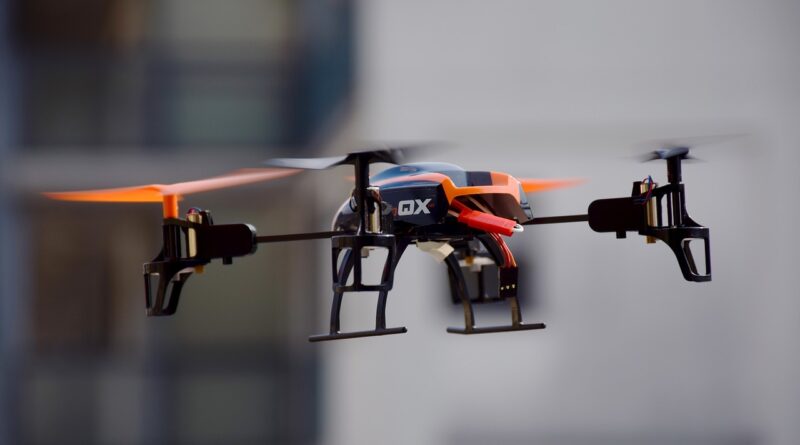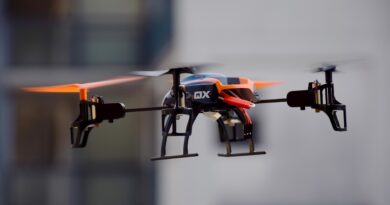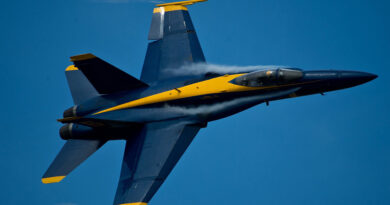Drones being used to monitor WordCup
How Aerial Technology is Monitoring the World Cup
The beautiful game has entered the age of intelligent aerial surveillance as drones are being used to monitor the World Cup in increasingly sophisticated ways. These unmanned aerial vehicles have evolved from novelty gadgets to essential tools that tournament organizers deploy to enhance security, improve broadcasting, and ensure the safety of the hundreds of thousands of fans who attend the world’s most-watched sporting event. The integration of drones into World Cup operations represents a technological revolution that’s transforming how massive international sporting events are managed and experienced.
Security and Crowd Management: The Primary Mission
Aerial Surveillance for Enhanced Safety
The most critical application of drones being used to monitor the World Cup involves security operations:
Mass Gathering Intelligence: With stadiums holding up to 90,000 spectators and fan zones accommodating hundreds of thousands more, drones provide real-time aerial perspectives that ground-based security cannot match. They can identify potential security threats, monitor crowd density, and detect unusual movement patterns that might indicate emerging problems.
Perimeter Security: Drones continuously patrol stadium perimeters and critical infrastructure, providing an additional layer of security beyond traditional fixed cameras and ground patrols. Their mobility allows security teams to respond rapidly to potential breaches or suspicious activities.
Traffic and Flow Management: By monitoring approaches to stadiums, drones help security personnel direct foot and vehicle traffic efficiently, preventing dangerous congestion and identifying bottlenecks before they become security concerns.
Emergency Response Coordination
When incidents occur, drones being used to monitor the World Cup become force multipliers for emergency services:
Rapid Situation Assessment: In medical emergencies, security incidents, or other crises, drones can reach the location within seconds, providing commanders with real-time visual information to coordinate an effective response.
Search and Rescue Support: For missing persons—especially children separated from parents—thermal imaging cameras on drones can quickly scan large areas more efficiently than ground teams.
Evidence Collection: Should incidents require investigation, drones can document scenes from multiple angles without disturbing evidence, providing crucial documentation for post-event analysis.
Broadcasting Revolution: Changing How We Watch
Aerial Cinematography
The visual presentation of the World Cup has been transformed by drones being used to monitor the World Cup from a broadcasting perspective:
Dynamic Establishing Shots: Broadcasters use drones to capture breathtaking aerial views of stadiums, fan zones, and host cities, creating visually stunning introductions to their coverage that were previously only possible with expensive helicopter shots.
Unique Game Angles: Specially designed drones can position themselves in ways that fixed cameras cannot, providing fresh perspectives on gameplay, set pieces, and tactical formations that enhance analytical coverage.
Crowd Reaction Shots: Drones can smoothly transition from field-level action to sweeping crowd reactions, capturing the emotional scale of World Cup moments in ways that traditional cameras struggle to achieve.
Behind-the-Scenes Coverage
The story beyond the pitch is increasingly captured by drones:
Fan Zone Documentation: Massive public viewing areas are monitored by drones that capture the scale of celebrations and help producers select the most compelling crowd reactions for broadcast.
Team Arrival and Departure: The comings and goings of national teams are tracked by drones, providing content for pre-and post-match coverage while simultaneously serving security functions.
Infrastructure Showcases: Host nations use drones to showcase stadium architecture, training facilities, and host cities, promoting tourism and highlighting their investments in World Cup infrastructure.
Operational Efficiency: Behind the Scenes Monitoring
Infrastructure and Venue Management
Tournament organizers employ drones being used to monitor the World Cup facilities around the clock:
Stadium Condition Monitoring: Drones conduct regular inspections of stadium roofs, lighting systems, and external structures, identifying maintenance needs without requiring dangerous manual inspections.
Pitch Quality Assessment: Specialized drones with multispectral cameras monitor grass health, moisture levels, and wear patterns on playing surfaces, providing greenkeeping teams with data to maintain perfect pitch conditions.
Construction Progress Documentation: In the years leading up to the tournament, drones regularly documented stadium construction progress, providing organizers with accurate progress reports and identifying potential delays early.
Logistics and Supply Chain
The massive logistical operation supporting the World Cup benefits from aerial monitoring:
Transportation Flow: Drones monitor traffic around stadiums, training sites, and official hotels, helping organizers optimize transportation routes for teams, officials, and equipment.
Supply Delivery Tracking: Delivery of crucial supplies—from catering to merchandise—is sometimes monitored by drones to ensure timely arrival and identify potential disruptions.
Waste Management: The enormous waste generated by World Cup events is managed more efficiently with drones that monitor bin levels and identify collection priorities across vast areas.
Technological Specifications: The Drones Themselves
Specialized Equipment for Specific Tasks
The drones being used to monitor the World Cup represent cutting-edge technology:
Security Drones: Typically larger models with extended flight times, high-resolution cameras, thermal imaging capabilities, and secure data transmission systems. Many feature collision avoidance systems for safe operation in crowded airspace.
Broadcasting Drones: These prioritize camera stability and quality, featuring gimbal-stabilized 4K or even 8K cameras capable of capturing broadcast-quality footage while in motion.
Mapping and Inspection Drones: Equipped with specialized sensors like LiDAR or multispectral cameras, these drones capture detailed data for structural analysis and environmental monitoring.
Operational Parameters
Flying drones in World Cup environments requires careful planning:
Flight Altitude Restrictions: Drones typically operate between 50-400 feet, depending on their purpose and local aviation regulations, with strict no-fly zones directly over spectator areas.
Communication Systems: Most security and operational drones use encrypted data links to prevent interception or hijacking, while broadcasting drones may use different transmission systems optimized for video quality.
Battery and Endurance: Modern tournament drones typically offer 30-45 minutes of flight time, with quick-swap battery systems enabling near-continuous operation during matches and events.
Regulatory Framework and Airspace Management
Coordinating with Aviation Authorities
The operation of drones being used to monitor the World Cup requires careful coordination:
Temporary Flight Restrictions: Host nations typically establish temporary restricted airspace around World Cup venues, prohibiting unauthorized drone operations that could interfere with official missions or present security risks.
Licensed Operators: All official World Cup drones are piloted by certified professionals with specific training for operating in complex environments and emergency procedures.
Frequency Management: With numerous drones operating simultaneously, careful frequency allocation prevents signal interference that could cause loss of control or video transmission.
Counter-Drone Measures
Security teams must protect against unauthorized drones:
Detection Systems: Radar, radio frequency scanners, and acoustic sensors constantly monitor for unauthorized drones attempting to enter restricted airspace around World Cup venues.
Neutralization Capabilities: Authorized security personnel have technologies to safely disable rogue drones through jamming, spoofing, or interception without causing them to crash into crowds.
Legal Framework: Host countries typically pass special legislation granting security forces additional authority to deal with unauthorized drones during the tournament period.
Fan Experience Enhancements
Interactive Elements
Beyond security and operations, drones being used to monitor the World Cup contribute to fan engagement:
Aerial Selfies: In designated areas, fans can pose with drones equipped with cameras, receiving instantly shareable aerial photographs of their World Cup experience.
Stadium Tours: Virtual reality experiences using drone footage allow fans to explore stadiums from unique aerial perspectives, either onsite or through digital platforms.
Augmented Reality Integration: Drone footage sometimes integrates with AR applications that provide statistics, player information, or interactive elements when fans view matches through their devices.
Safety and Convenience
Fans benefit indirectly from drone monitoring:
Reduced Wait Times: By monitoring entry queues and security checkpoints, drones help organizers allocate resources efficiently, shortening waiting times for fans.
Enhanced Navigation: Drone footage helps improve stadium wayfinding and helps fans navigate complex venues and surrounding areas.
Emergency Preparedness: Knowing that comprehensive aerial monitoring exists provides fans with additional confidence in their safety during events.
Environmental Monitoring and Sustainability
Ecological Impact Assessment
Modern World Cups prioritize sustainability, with drones playing a monitoring role:
Carbon Footprint Tracking: Drones help monitor transportation patterns and energy usage, contributing to data collection for the tournament’s overall environmental impact assessment.
Waste Management Optimization: By identifying waste accumulation patterns, drones help optimize collection routes and schedules, reducing the environmental impact of tournament operations.
Green Space Monitoring: Host cities use drones to ensure that temporary infrastructure doesn’t unnecessarily damage local ecosystems and that restoration plans are properly implemented.
Legacy Planning
The drones being used to monitor the World Cup contribute to long-term benefits:
Urban Planning Data: The aerial data collected during tournament preparation and operation provides host cities with valuable information for future urban planning and major event management.
Technology Transfer: Local operators trained to work with advanced drone systems develop skills that remain valuable after the tournament concludes.
Infrastructure Documentation: Detailed aerial surveys of new transportation links and facilities provide baseline data for future maintenance and development.
Challenges and Limitations
Technical and Operational Hurdles
Deploying drones to monitor the World Cup presents significant challenges:
Weather Limitations: High winds, heavy rain, or other adverse weather conditions can ground drone operations, requiring redundant monitoring systems.
Signal Interference: Dense urban environments with numerous wireless signals can sometimes disrupt drone communications, necessitating robust frequency management.
Battery Logistics: Managing hundreds of drone batteries, charging cycles, and replacements represents a substantial operational challenge during extended match days.
Privacy Considerations
The extensive surveillance capabilities of drones raise important questions:
Data Protection: Footage captured by drones must be handled in compliance with local privacy laws and deleted after its operational purpose has been served.
Public Perception: While most fans understand the security benefits, some may feel uncomfortable with the level of surveillance, requiring transparent communication about monitoring practices.
Regulatory Compliance: Operating drones in different host countries requires navigating varying privacy regulations and cultural attitudes toward surveillance.
The Future of Drones in World Cup Monitoring
Emerging Technologies
Future tournaments will likely see advances in how drones are used to monitor the World Cup:
Artificial Intelligence Integration: AI-powered drones will automatically identify potential security concerns, crowd anomalies, or operational issues without human intervention.
Swarm Technology: Coordinated drone swarms could provide more comprehensive coverage of large areas, with individual drones specializing in different monitoring functions.
Extended Capabilities: Drones with more sophisticated sensors, longer flight times, and greater autonomy will expand monitoring possibilities while reducing operational demands.
Expanding Applications
The role of drones will likely grow beyond current applications:
Player Performance Tracking: Future tournaments might use specialized drones to capture detailed player movement data for tactical analysis.
Enhanced Fan Services: Drones could eventually deliver concessions or merchandise directly to spectators’ seats, though significant regulatory and safety hurdles remain.
Environmental Monitoring: More sophisticated sensors could track air quality, noise levels, and other environmental factors in real-time during events.
Conclusion: A Technological Game Changer
The integration of drones being used to monitor the World Cup represents a fundamental shift in how massive international sporting events are managed. What began as supplementary technology has become an indispensable tool for security, operations, and broadcasting. These unmanned aerial systems provide perspectives and capabilities that simply didn’t exist a decade ago, making World Cups safer, more efficiently managed, and more visually compelling for global audiences.
As the technology continues to evolve, we can expect drones to take on even more significant roles in future tournaments, potentially transforming everything from security protocols to how fans experience the games. The World Cup has always represented the pinnacle of football excellence—now it also showcases the cutting edge of event management technology, with drones playing an increasingly central role in the beautiful game’s biggest stage.




